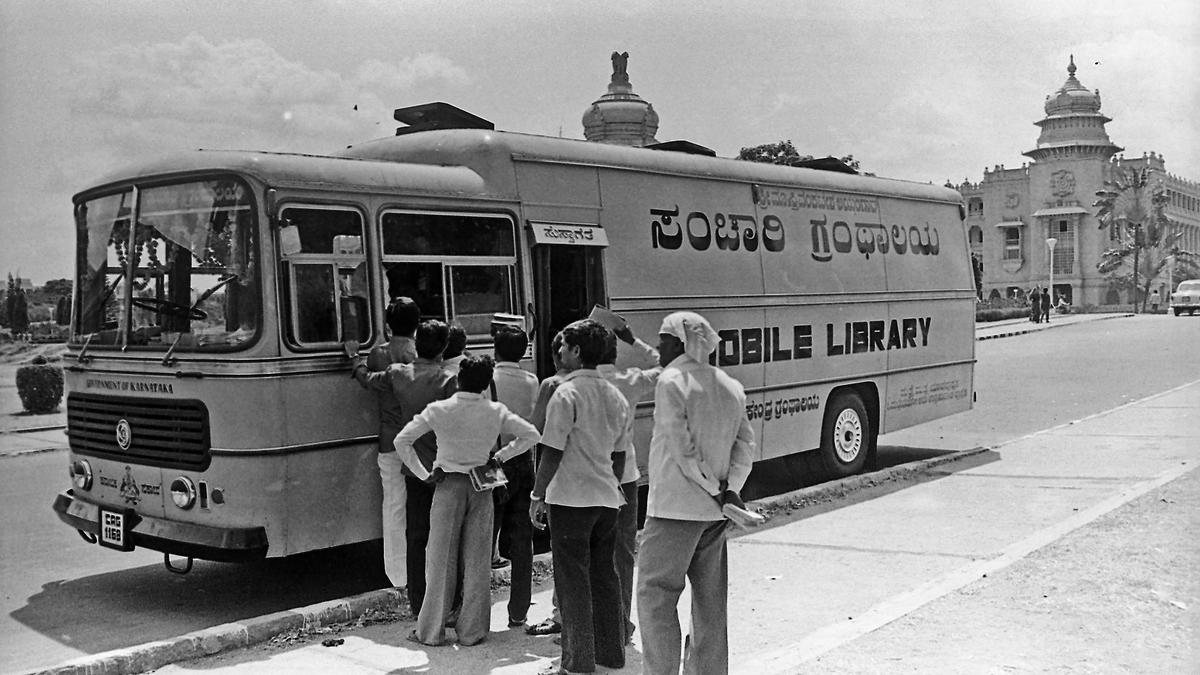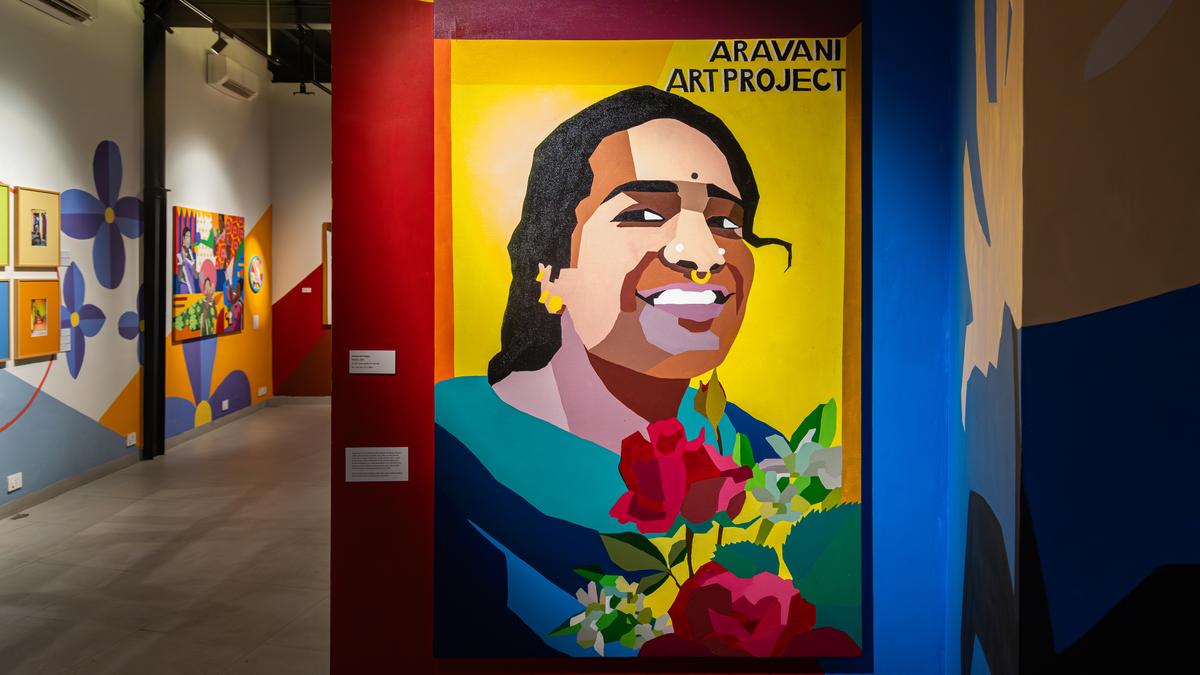Libraries have existed around the world for centuries. When I was in around third grade, I stumbled upon something new and exciting as a bookworm and a travelling enthusiast. A ship. And not just any ship, a ship called Logos Hope. What’s special about this fleet, you may ask? For an eight-year-old who adored books, to go inside a ship for the first time and find it filled with books in every corner was heavenly. It was the first time I had been introduced to the concept of a moving library, and with time I learnt how revolutionary it was in a developing country.
The Hindu Lit for Life mobile library in Chennai.
| Photo Credit:
Raghunathan SR
Before the invention of technology and the Internet, a major method to pass on knowledge was through books and writing. Accessibility to this knowledge was mainly through educational institutes and, more importantly, public libraries. Earlier, traditional libraries used to be situated much more in developed areas of the country, inevitably affecting the accessibility of the same. With social issues like untouchability and inequality haunting every nook and cranny, it was more than often the marginalised communities that were on the receiving end of this inaccessibility.
To bridge this gap, the concept of “moving libraries” emerged in India. These libraries on wheels bring books and educational resources to people who may not have access to traditional libraries due to geographical, social, or economic barriers. Such moving libraries, popularly called mobile libraries, cater to rural and street populations, ensuring that books and learning are not confined to urban centres.
Books on wheels
The concept of mobile libraries is not new; it has existed globally for centuries in different forms, including book carts, travelling librarians, and postal book services. The first moving library in India was perhaps the bullock cart filled with books going around Melavasal, a village near Mannargudi in Tamil Nadu, in 1931. An initiative to ensure people in deep rural areas of India have access to books was the brainchild of Rao Bahadur S.V. Kanagasabai Pillai, a Mannargudi-based engineer.
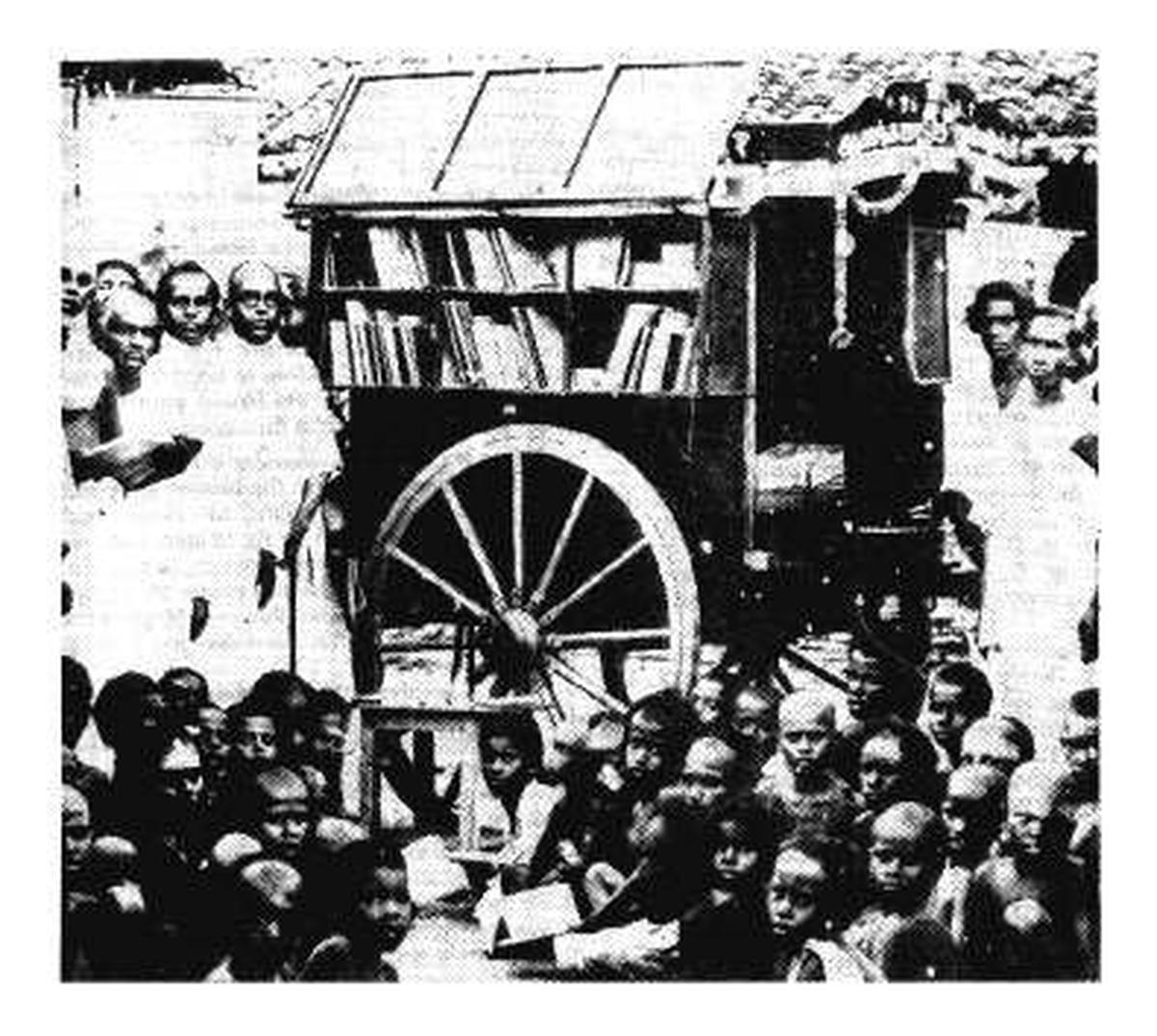
The first mobile library of India near Mannargudi in Tamil Nadu, in 1931.
| Photo Credit:
The Hindu Archives
While imparting education to those who could not access the same in schools and other institutions, Pillai had initiated classes in various villages through which hundreds learnt how to read and write in Tamil. Started as a social work endeavour, Pillai soon realised that even after learning how to read and write, most of the rural villages did not have access to books or papers to improve upon the same. This inspired him to create a mobile library with whatever books he could collect and a bullock designed to store the same.
The books mainly dealt with vocational skill improvement books for farmers and other villagers with tips about gardening, farming, and various other cottage industries. Soon several other books, including fables and parables, also joined the collection. Close to a hundred villages were toured by this moving library, ensuring that thousands could borrow the books of their choice until the cart came along in its next round of touring. As times changed and gramophones became popular, records were also taken in the cart along with a gramophone to engage more with the villagers.
The idea gained more traction in India during the mid-20th century when literacy campaigns and educational reforms grew stronger, and people recognised the need to make books more available. Thus began the evolution of India’s moving libraries. Through bullock carts, autorickshaws, vans, cycles, animal backs, boats, and whatnot. This revolutionary idea has grown much stronger in the past years, and soon libraries around the country started having a mobile library to ensure better reachability.
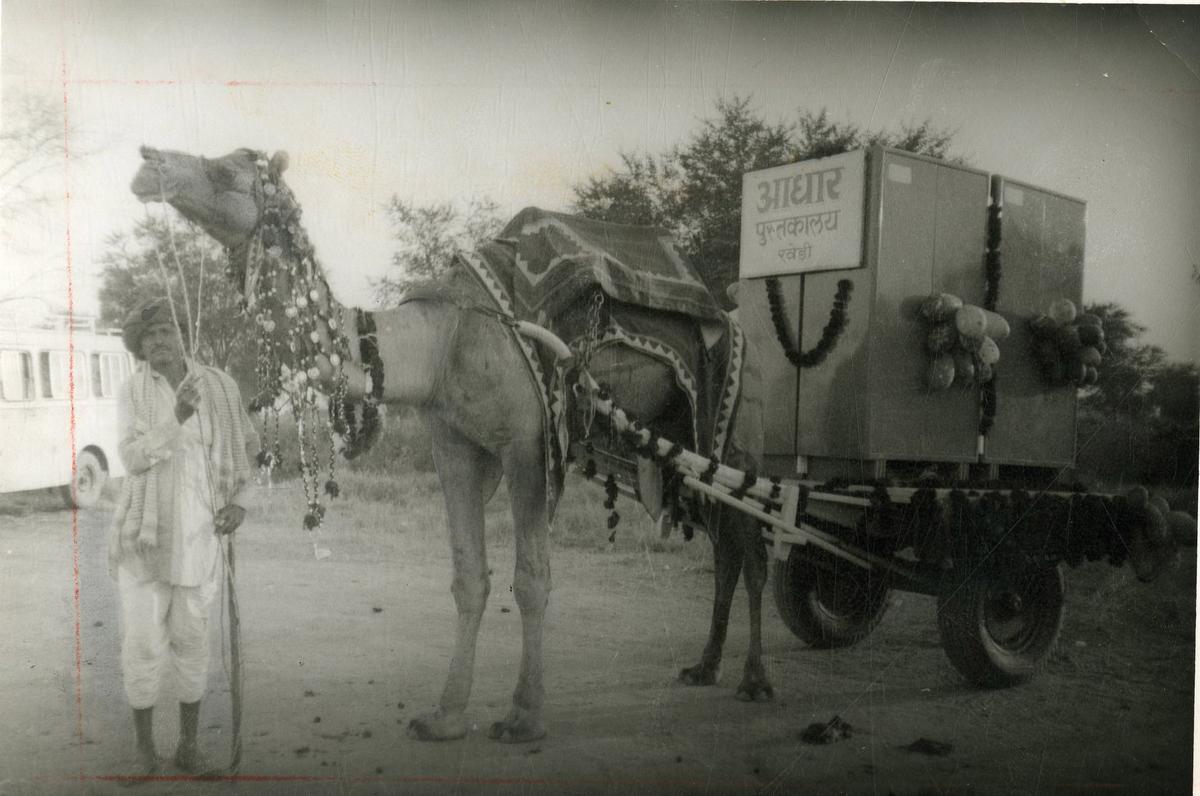
‘Adhar’, the library fitted onto a camel cart, ready for rounds in Bassi village of Jaipur district in Rajasthan.
| Photo Credit:
The Hindu Archives
Is it a boat, a ship, or a library?
With the transportation industry flourishing over the years, moving libraries started having more avenues to explore. From bullock carts and cycles, it started to transform buses, vans, and boats into libraries for the wider population to access. Over the years, they evolved by incorporating technology and digital resources to improve their impact. Here are a few unique libraries around the country that are on the move.
The Delhi Public Library was among one of the first institutions to introduce mobile library vans in 1957. This initiative inspired other states and organisations to launch similar projects. In Tamil Nadu, a cycle library is being run by an NGO, Dulkal, while Maharashtra has multiple initiatives like a walking library to vans and bullock carts. In areas connected by waterways like West Bengal and Kerala, houseboats have been converted into libraries. The Young Readers’ Boat Library in Kolkata is known to be India’s first boat library and offers a variety of books in English, Hindi, and Bengali, as well as activities like storytelling and book launches. There is also a tram-converted library in Kolkata, which has evolved with time to provide WiFi access for readers who want to avail e-books.
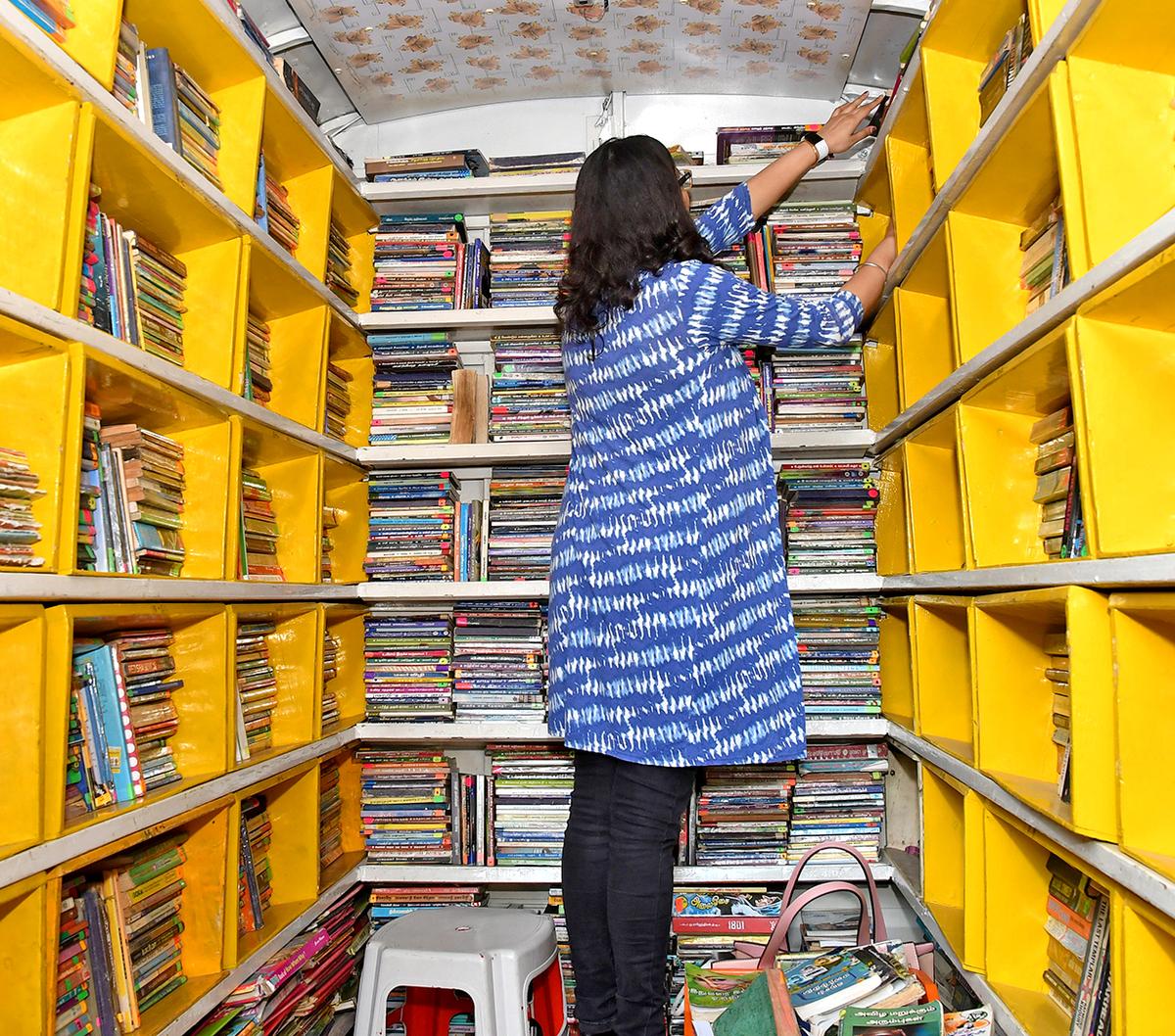
The Stories Library Cafe van in Chennai.
| Photo Credit:
Velankanni Raj B
While coastal states converted boats into libraries, desert communities in Rajasthan have improvised and brought in the concept of camel libraries. In Rajasthan’s Jodhpur, children folk around the makeshift camel library as it travels through the rural villages across the deserts. Buses converted into libraries are one of the most common formats of mobile libraries in India. In places like Delhi, Kolkata, Chennai, and rural areas of Maharashtra and Karnataka, bus libraries are one of the easy options to avail when it comes to getting books.
Future on wheels?
With time, a lot of libraries are becoming quiet corridors with filled bookshelves. Initiatives that promote doorstep libraries like JustBooks, Doorstepbooks in Kolkata, and NOOL Library in Bangalore ensure that libraries are evolving with time and not dying out with the coming of more and more technological opportunities. To ensure such initiatives and unique formats of libraries do not go unnoticed among the masses, adequate support from the government, the private sector, and local communities is needed. As India moves forward in ensuring better literacy rates, enhancing the available resources for the betterment of society is very much necessary and crucial in ensuring that no one is left behind in the pursuit of knowledge.
niranjana.ps@thehindu.co.in
Published – February 17, 2025 04:21 pm IST


